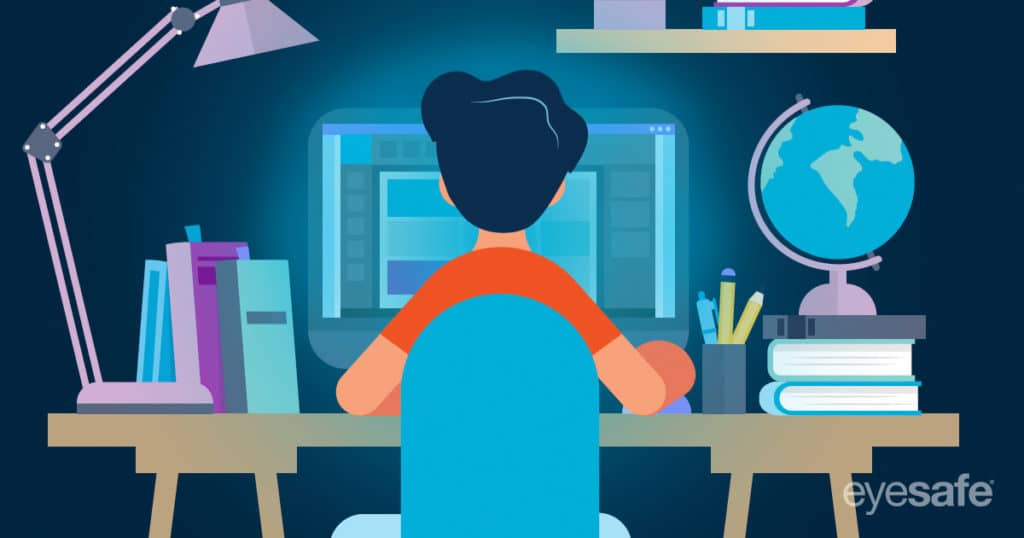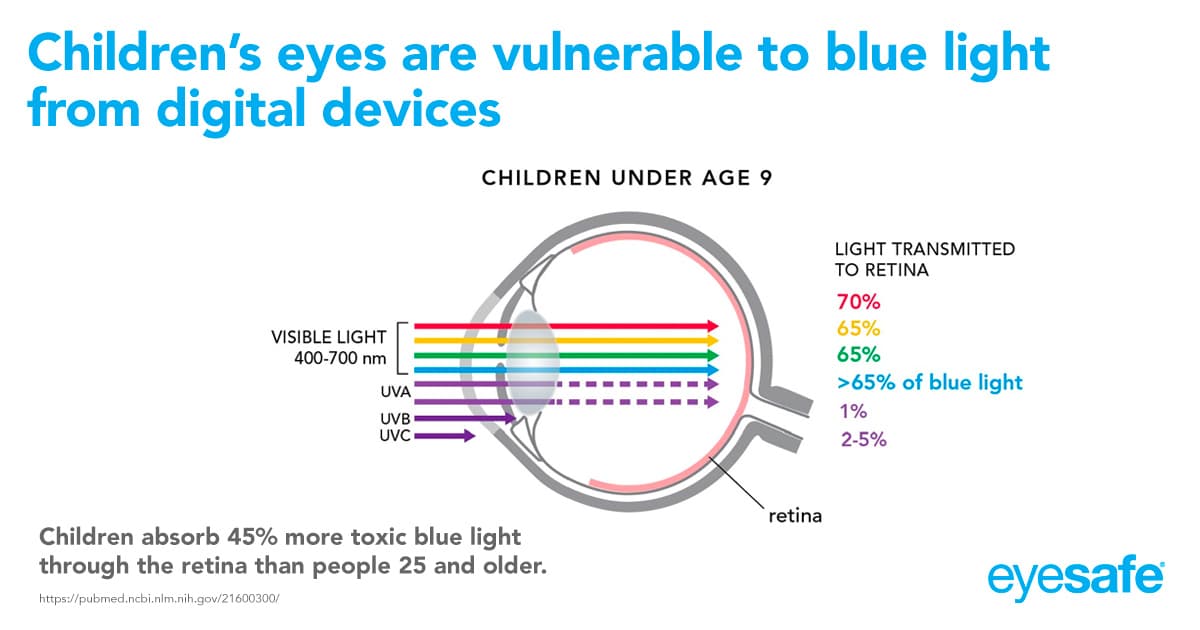Students are spending more time than ever on digital devices. In fact, screen time has doubled since 2019, largely due to the pandemic, which has forced educators to shift to distance learning.
Even for the youngest students, 6 hours a day on screens is the new norm. And increased screen time has doctors concerned: 94% of eye doctors say they are concerned about screen time and prolonged exposure to the high-energy blue light devices emit.
There are a few reasons blue light exposure is problematic for children. Their eyes are still developing (and in fact, continue to do so until age 25). Their crystalline lenses are clear, which allows more blue light to reach the back of the eye to the retina. As we age, our lenses turn more yellow, which reduces the blue light that can pass through. Unfortunately, children don’t have this protection.
While there much we don’t know about the long-term effects of blue light exposure (since technology and LED use has only been mainstream the last 20 years or so), research indicates there is an accumulation of lipofuscin which can lead to cell death and eventually macular degeneration. No long-term studies have been done, but we must be careful as children are growing up in the digital age and are exposed to devices as early as birth.
To make devices safer for children and help shield their eyes from blue light, Eyesafe, the global leader in blue light management for digital devices and Trafera, the leading provider of Chromebooks for education, are partnering to apply blue light filters to student’s devices. These filters block a portion of blue light and help provide the natural filtration otherwise not present in children’s eyes.
For more information or to schedule a webinar on screen time and blue light, please contact Eyesafe at [email protected] or your local Trafera rep.


